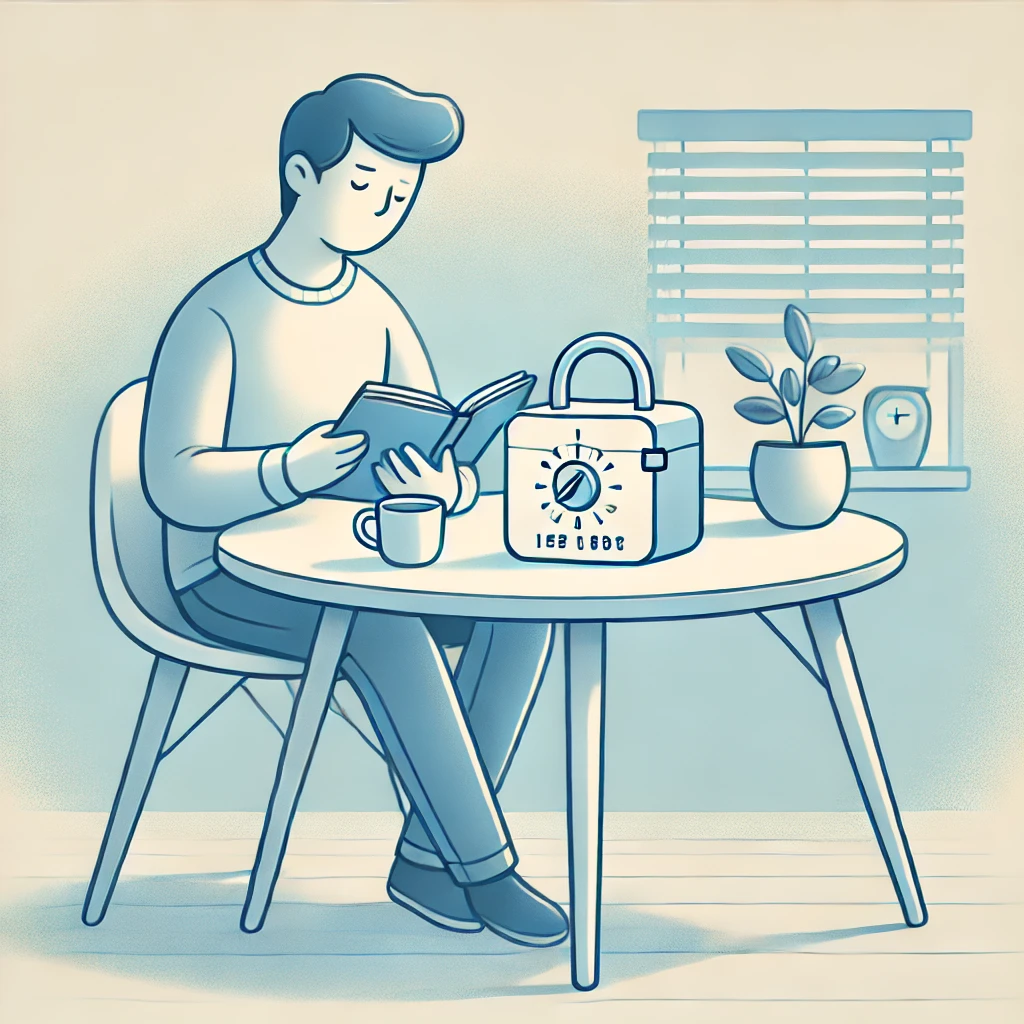Introducing the Timed Lockbox: Creating a New Association with Temporary Inaccessibility
Stage 1 is about introducing the concept of temporary inaccessibility to your daily routine. This means creating periods where the item or behavior driving your addiction is intentionally unavailable. This approach helps your brain adapt to the idea that you can function and thrive even when the addictive substance or activity isn’t immediately accessible.
To achieve this, we use a powerful tool: the timed lockbox. This simple device allows you to lock away items—like cannabis, cigarettes, snacks, or even your smartphone—for a predetermined period. By doing so, you create a structured environment that makes the addictive behavior inaccessible, training your brain to build new habits around this temporary unavailability.
This stage focuses on carefully building a new behavioral association with inaccessibility. By locking the item away, you train your brain to respond calmly to periods of unavailability. Over time, this reduces the intensity of cravings and creates a stronger sense of control over your habits. Importantly, Stage 1 is designed to ease you into the process without overwhelming yourself, preparing the foundation for future progress.
Focus on Specific Habits You Want to Change
At this stage, the goal is not to challenge yourself with extreme restrictions but to address behaviors that you already find undesirable. For example:
- Someone who enjoys Instagram but dislikes spending three hours scrolling without a break.
- A person who likes using cannabis or drinking alcohol in the evening but regrets doing so in the morning.
- An individual who loves Oreos but feels bad after eating four packs in one night.
By targeting these behaviors, you begin creating change in a way that feels empowering and manageable.

Building Confidence in the Timed Lockbox
The lockbox serves as a supportive tool for gently shifting habits. Here’s how to approach this phase:
Start with Short Locking Intervals
- Begin by locking the box for just 1–2 hours during times of undesired consumption.
- Focus on observing how your brain reacts to the temporary unavailability.
Gradually Increase the Duration
- After a few days, extend the locked periods slightly (e.g., by 15–30 minutes).
- Ensure the adjustments feel natural and don’t create stress.
Focus on Small Adjustments
- Choose manageable changes that address specific habits you want to shift.
- Avoid drastic changes that might cause emotional discomfort.
Reflect Daily
- Evaluate the impact of using the lockbox:
- Did the locked period feel manageable?
- How did you feel before, during, and after the lock period?
- Use these insights to refine your approach and gain a deeper understanding of your habits.
- Evaluate the impact of using the lockbox:
Goals of Stage 1
Create a New Association
- Teach your brain that when the lockbox is locked, the behavior is temporarily unavailable without triggering distress or frustration.
Build Confidence and Trust
- Experience small wins by successfully reducing behaviors that feel excessive or undesirable.
Lay the Foundation for Bigger Changes
- Prepare for future challenges by creating positive associations with temporary inaccessibility.

Practical Examples of Application
Lock the Box for Unwanted Morning Usage
If you dislike using cannabis or drinking alcohol in the morning, set the lockbox to keep these items inaccessible during that time.Limit Prolonged Social Media Scrolling
Use the timed lockbox to restrict access to your phone or social media apps during work hours or other moments when you want to focus.Control Binge Eating
If you find yourself overeating snacks or sweets like cookies, lock your favorite foods in the box. After consuming a portion, set the lockbox to delay access for several hours, helping you avoid binge episodes and gain control over your eating habits.Establish Non-Smoking Hours
For cigarette smokers, choose fixed hours in the day—such as two-hour intervals—during which cigarettes are locked away. This helps you introduce breaks into your smoking routine, reducing overall consumption gradually and building resilience.Gradually Increase Locked Intervals
As your comfort and confidence grow, extend the locked periods slightly to further reduce access to undesired behaviors or items.
Building for the Next Stage
By the end of Stage 1, you should feel comfortable using the timed lockbox and confident in your ability to manage small changes in behavior. This foundation is essential for tackling the more challenging phases ahead.
When ready, move on to Stage 2: Tackling Longer Intervals Without Use, where the focus shifts to extended periods of non-consumption and testing your limits.
